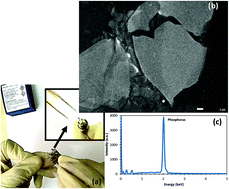Black phosphorus crystal as a saturable absorber for both a Q-switched and mode-locked erbium-doped fiber laser
Abstract
We report a simple way to generate Q-switched and mode-locked pulses by incorporating black phosphorus (BP) as a saturable absorber (SA) in an erbium-doped fiber laser (EDFL) cavity. The preparation of BP-based SA is facilitated by a mechanical exfoliation method. Stable mode-locked pulses with a repetition rate of 1 MHz and energy of 7.35 nJ energy per pulse are generated under a maximum pump power of 250 mW in the ring cavity.


 Please wait while we load your content...
Please wait while we load your content...